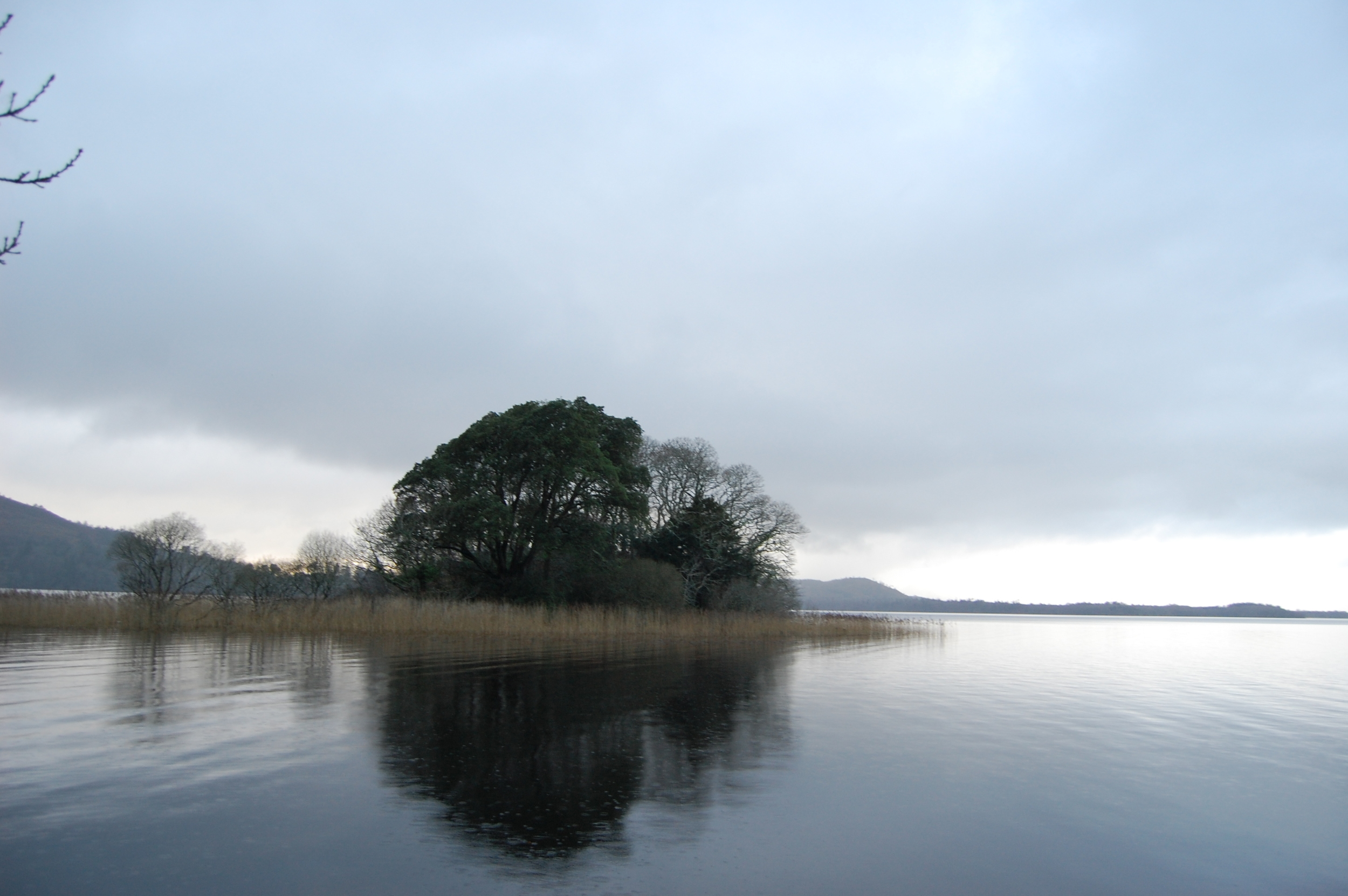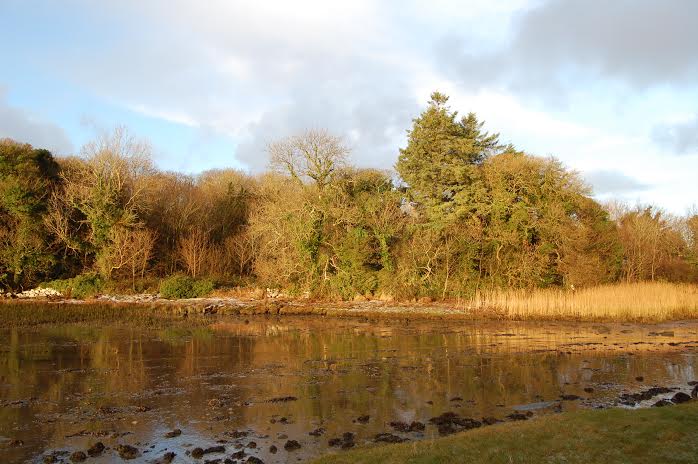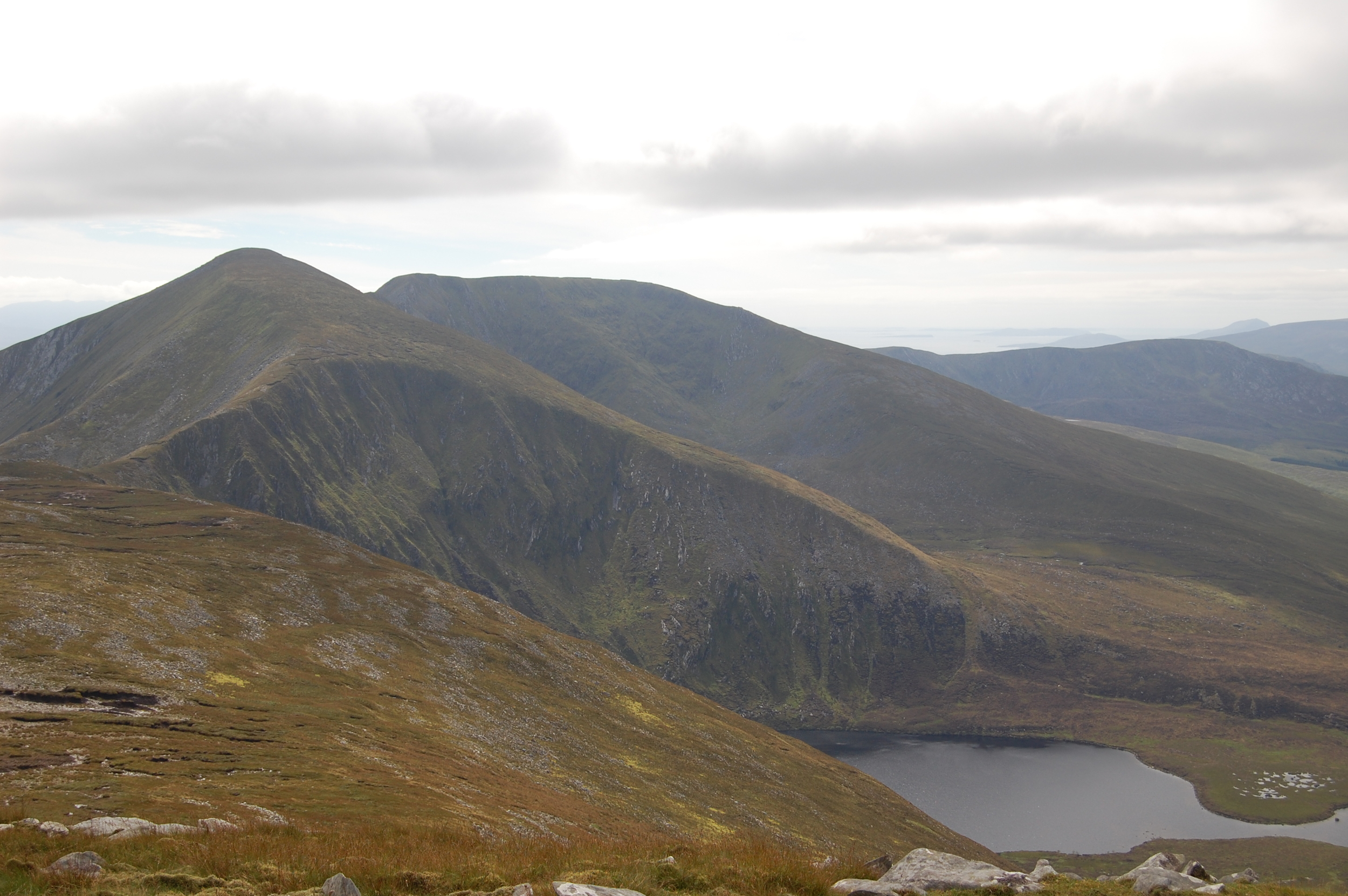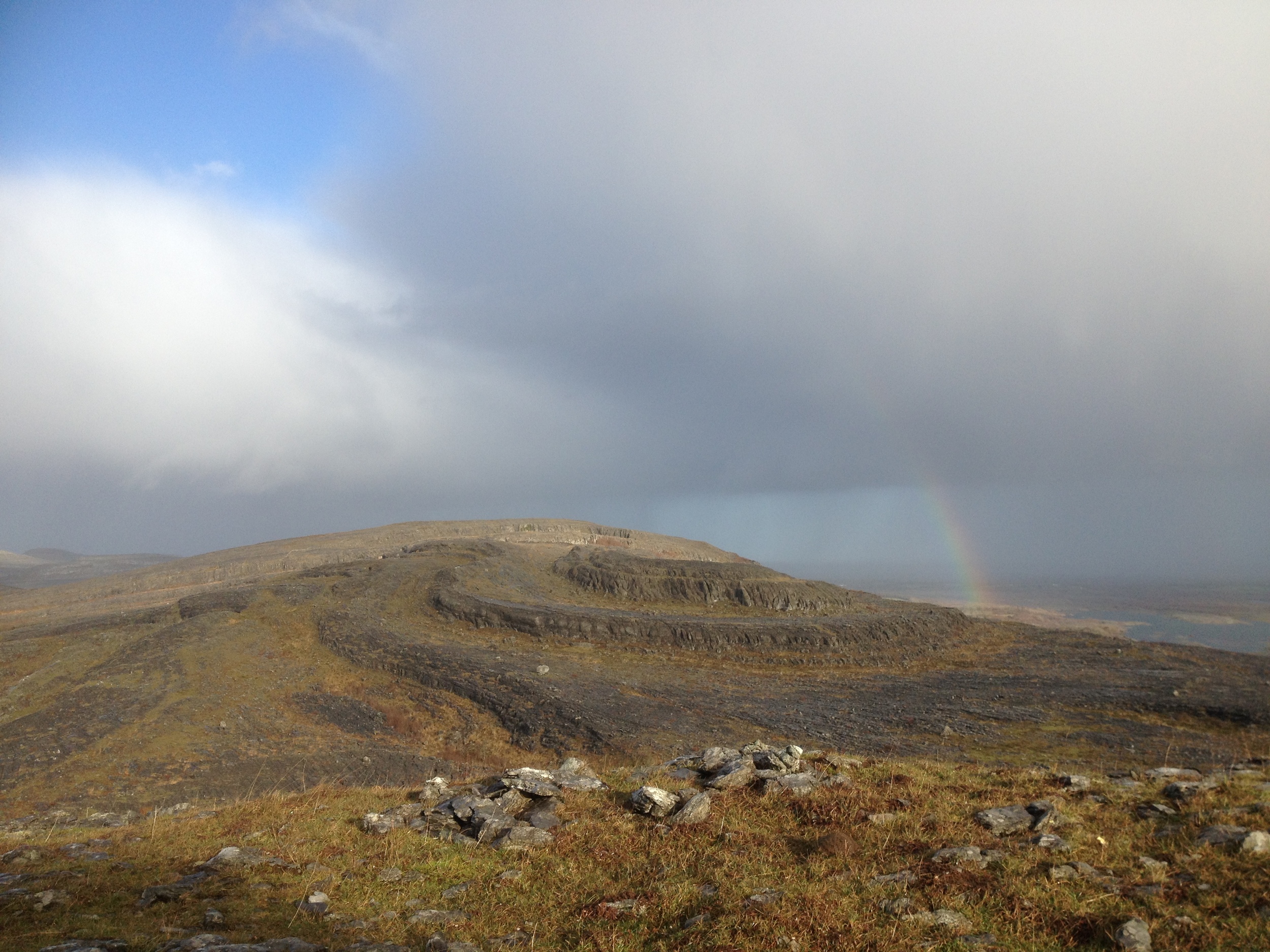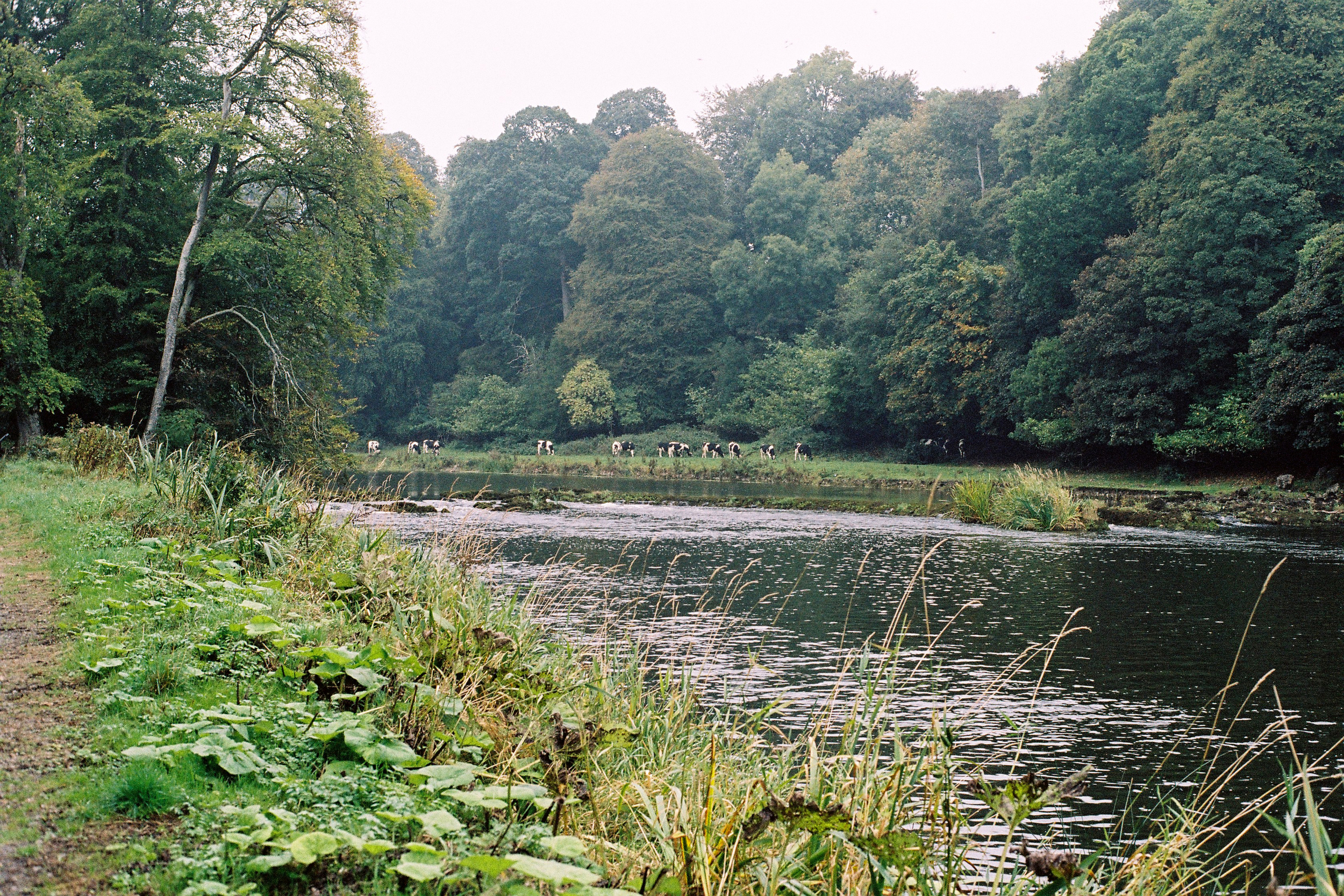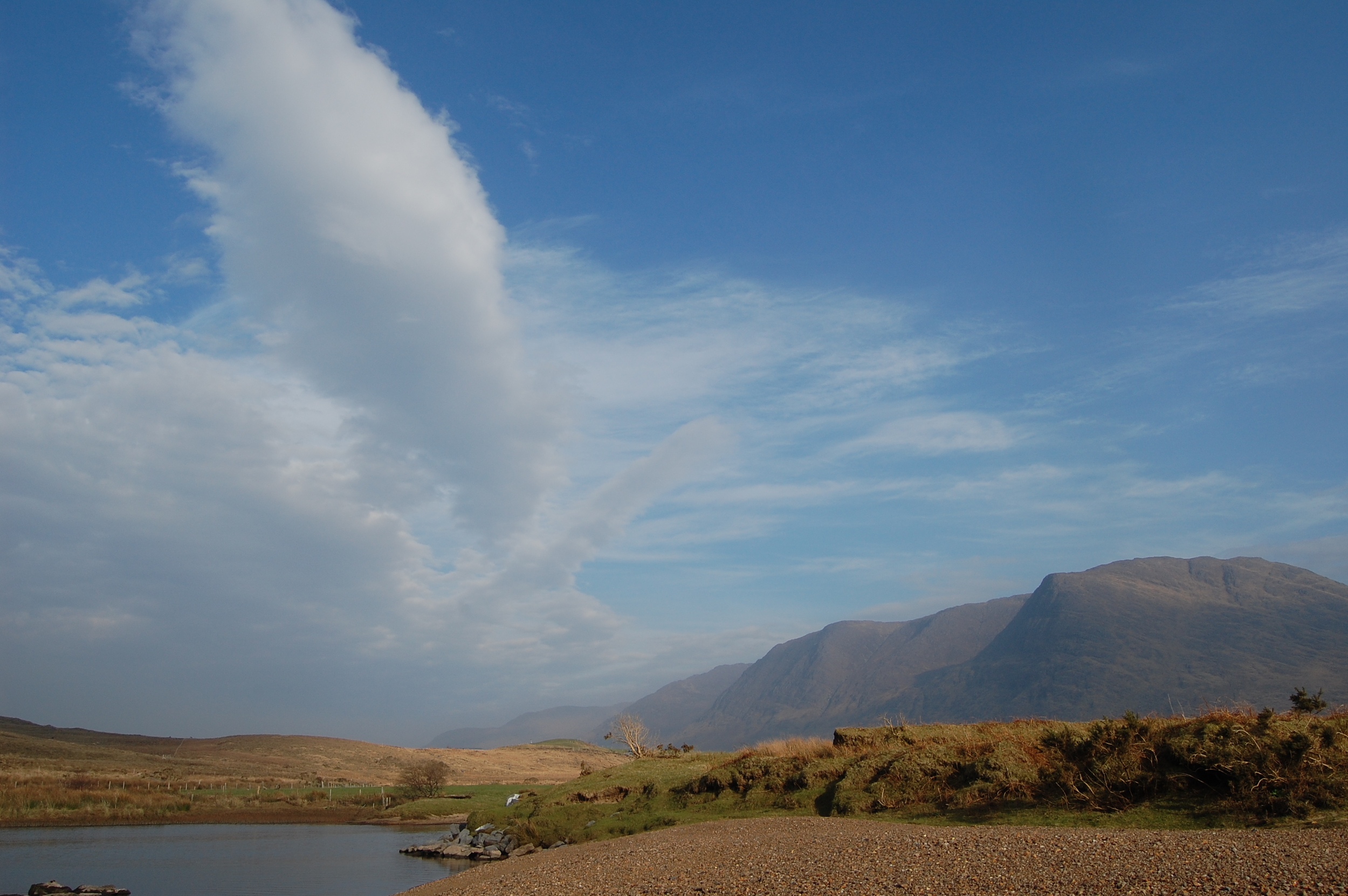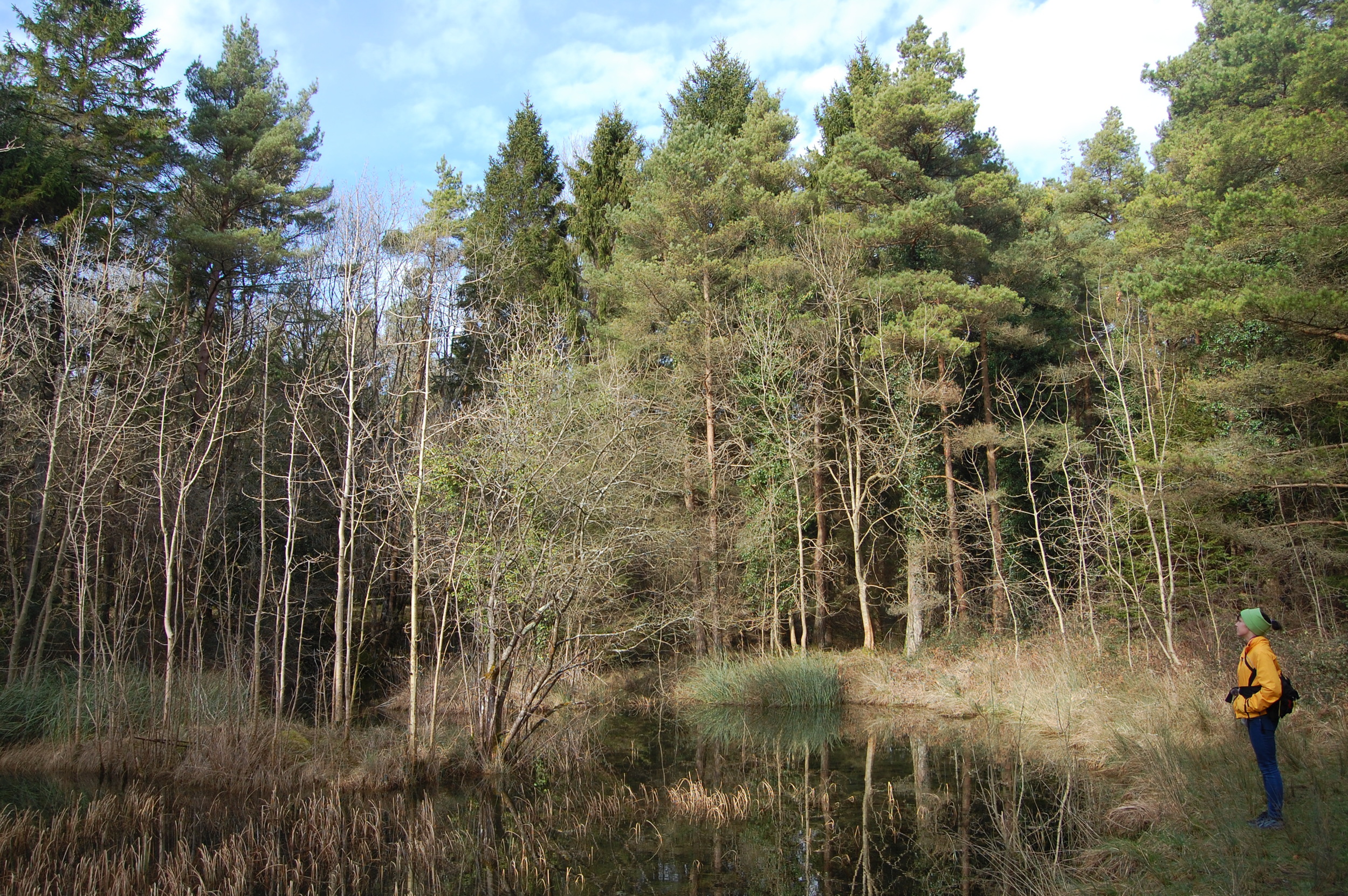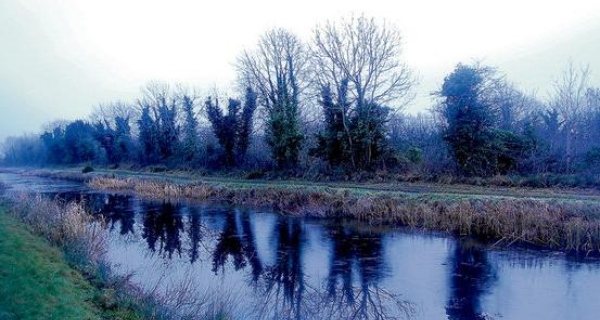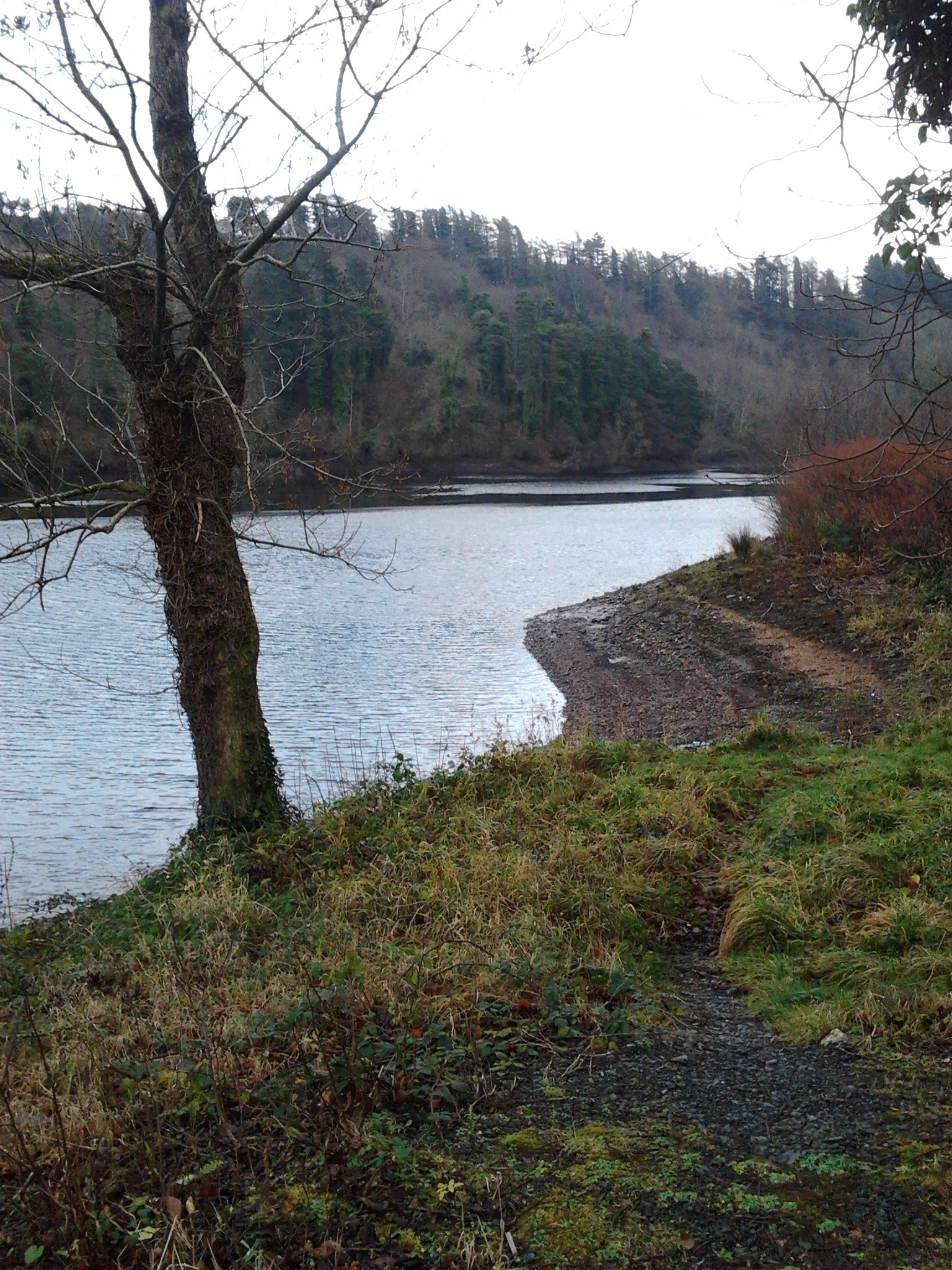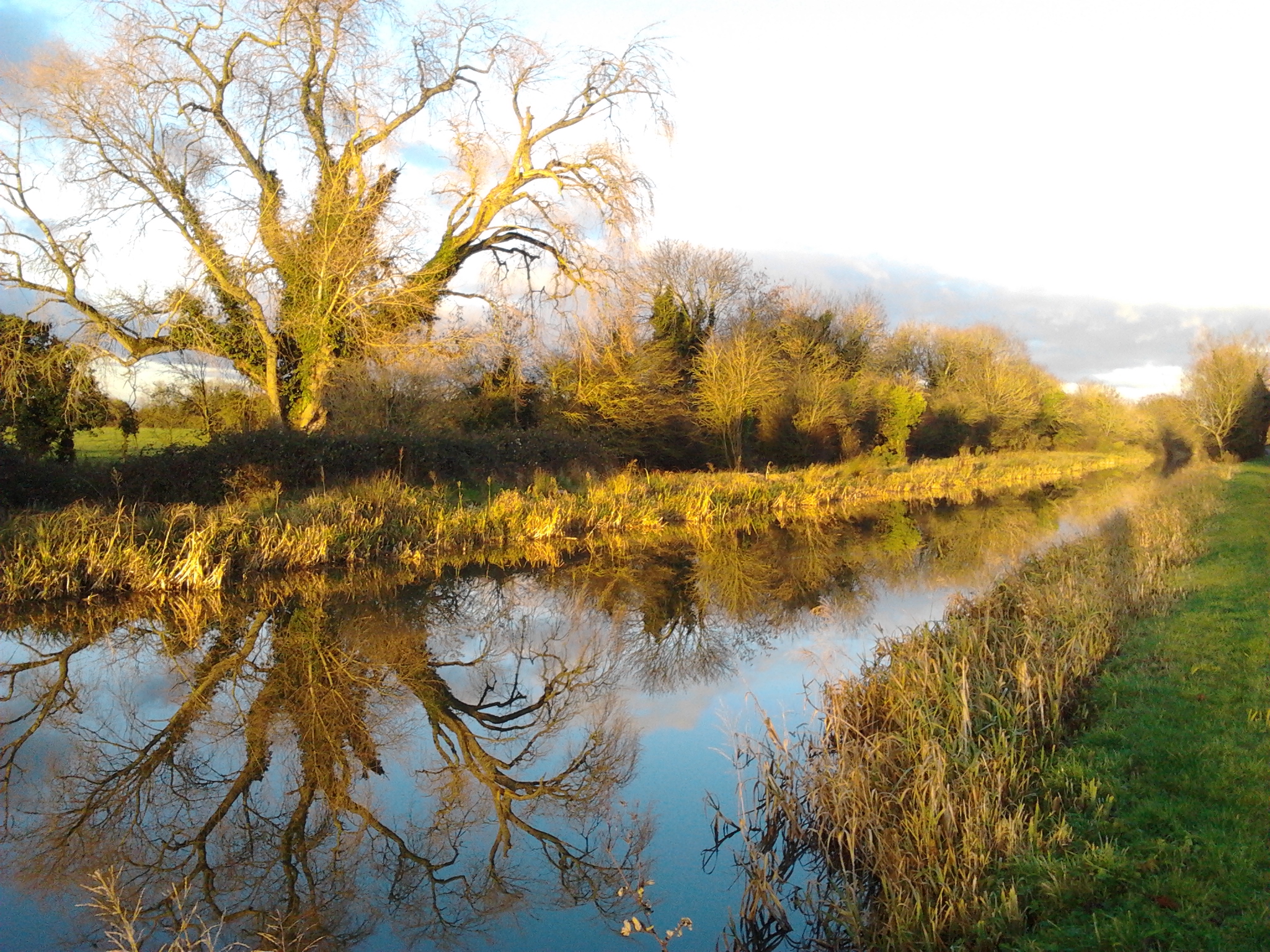A personal essay on spending time in the Irish hills
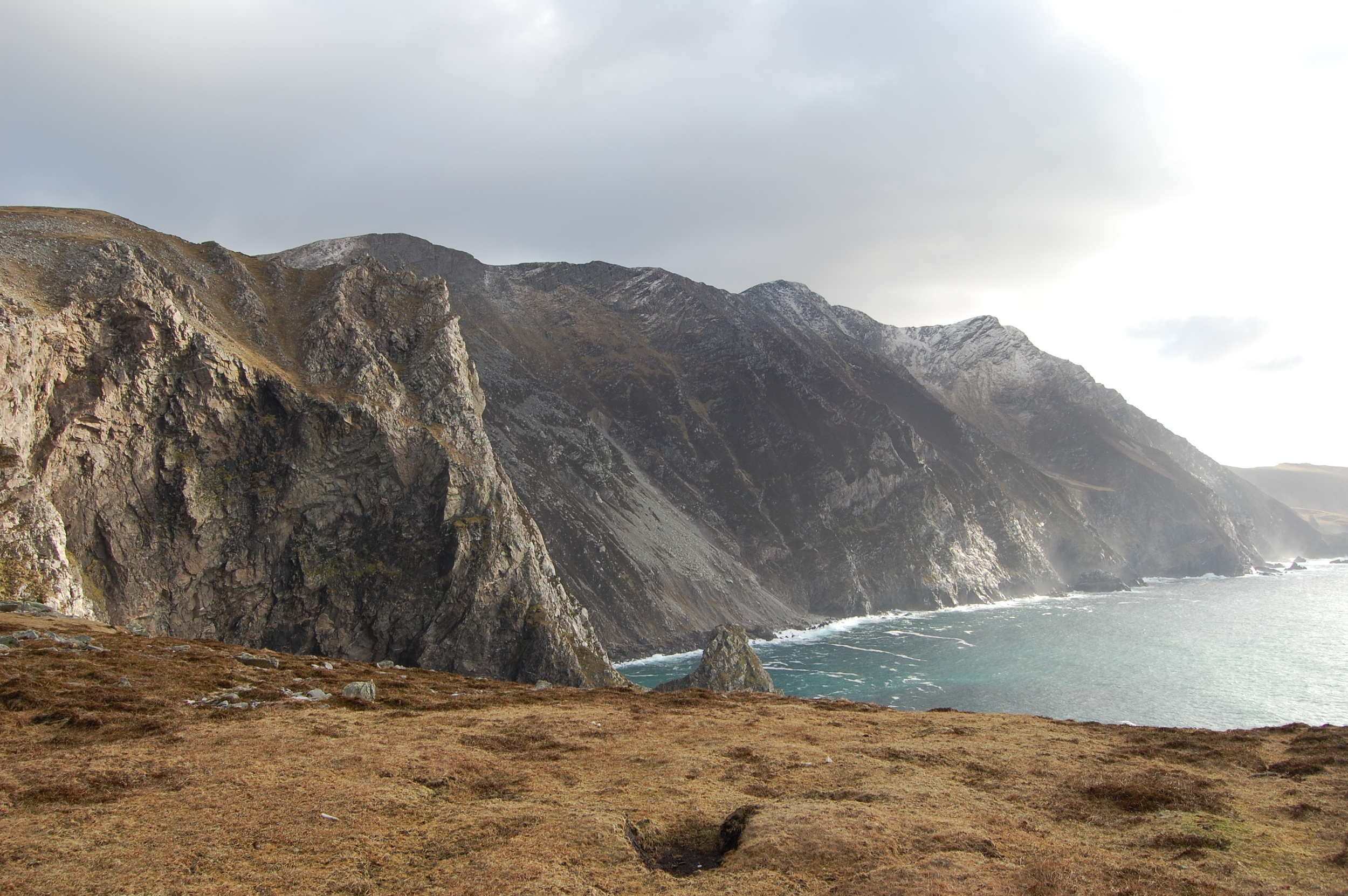
Earthlines magazine, May 2013
The remote stretch of coastland on the north-west of Achill Island is sometimes called ‘the back of beyond’. The island is tethered to the County Mayo mainland by a swing bridge that resembles a leviathan’s fleshless ribs. When you come to Achill you enter the belly of the whale.
From Achill Sound you could head across boggy hills to the cliff-fringed south of the island. This little-visited district is Gaeltacht, an official Irish-speaking region, but the language is rarely heard here today.
Or you could head north, where horizontal bog gives way to sand dunes and a chain of north-facing beaches. From the Bullsmouth you could ask a local boatman to take you through racing tidal currents to Inis Bigil, an island-off-an- island, population twenty-five.
Or you could go west, where the Atlantic terminates moodily on the two-mile arc of Trawmore beach by the village of Keel, and bungalows clutter the coast like a messy monopoly board. The road ends with a vertiginous drop to Keem, a beach of calm water and flaxen sand encased by steep hills. Between 1947 and 1975, the landing of twelve thousand basking sharks bloodied the waters here.
Heinrich Böll wrote that on Achill he could ‘play truant from Europe’; it is a wild place with wild planning. A fading holiday home development sits on the side of Croaghaun mountain, approved by god knows who. In Keel village, there’s a gaping pit where the construction of a hotel was abandoned. And high on the Pollagh bog in November 2011, a local developer built his bizarre ‘Achill henge’ monument: thirty concrete columns in a perfect circle thirty metres across. The developer described it as a ‘place for reflection’; many see it as a tomb for the Celtic Tiger.
The mountains of Slievemore and Croaghaun stand above all this, the former a cone of green, grey and brown, the latter a broad and undulating dome. At the start of the nineteenth century the British built a signal tower on the boggy ridge between these two hills to watch for invasion from Napoleon’s armies. Behind this ridge is the back of beyond. This is the reason I am here.
When I finished university in 2007, I felt as if I was facing an identity crisis – the kind that many freshly minted adults experience. As a teenager I was addicted to rooting around in tidepools, but I hadn’t figured out how to turn this into a job. I had studied zoology, but didn’t want to be an academic, with all the specialisation and lab-slaving it entails. I stumbled into journalism, but it wasn’t enough to satisfy my search for identity: who was I, and who did I want to become?
Living in Dublin, I thought that some of the sub-cultures which were thriving in the vacuum of a collapsed economy — hipsters, artists, DIY publishers — offered an answer. I bought some new clothes, started going to more gigs, even rented a space in an artist’s studio, with vague plans to publish a small magazine. I craved belonging, and the chance to define myself. But all I felt was twitchy and restless. I grew weary of music, fashion and art that seemed fixated on aesthetics and image, its preoccupations shifting without reason. So much of it felt like a conscious attempt to create culture unsupported by meaning. This wouldn’t do.
To get to the back of beyond, you follow a track along the Abhainn Bhaile river. The expansiveness of this bogscape inflates everything around it, so it all seems vast — the mountains, the clouds moving in from the Atlantic, the four hundred-metre Minaun cliffs across the bay. Even the surf crashing on Trawmore beach seems louder up here.
I leave the track behind and fight my way through the channels of an old peat field, then I slip and slide up the bog towards the ridge. I see a rocky trail and head straight towards it — surely it will offer better grip. But I’m in for a letdown: it’s not a rocky trail, it’s a stream. I keep climbing, and soon a cold northerly gust hits my nose. I’m near the top. From the south side of the broad ridge I can see north to the Inishkea Islands, two low reefs that face down the Atlantic, abandoned by their inhabitants not long after a storm drowned ten of their fishermen in 1927.
I walk to the north side of the ridge and there, right below me, is little Loch na Ciaróige, set like an inky jewel in the earth over Annagh beach on an isolated wedge of peaty coastland. In the pub that night an old islander told me he had heard much of Annagh but had never been. He wondered if he was still fit enough to make the trek.
In 2010, after the breakdown of a relationship, I started hillwalking. I remember stopping for lunch on the upper slopes on Corcóg, in Connemara, Co Galway on one of my first walks. Sitting on a saddle between two peaks, I could see nothing but mountains and valleys around me. There were no roads, cars, or houses within sight. Just by walking to this spot, I had made civilisation vanish. This was my first experience of the idea of wilderness, and I was addicted.
I went into the mountains as often as I could, and started poring over maps: was there any wilderness left in Ireland? How far could I get from houses or roads? How deep could I go into Ireland’s mountains? I was fascinated by the idea that there were still big uncivilised tracts of land out there, particularly in countries that were otherwise considered to be ‘developed’.
I found out that the remotest point in the contiguous United States is on Two Ocean Plateau in Yellowstone National Park, twenty-two miles from the nearest road as the crow flies (in practice, walking there is a seventy-mile round- trip). On the UK mainland the remotest point is between Loch Maree and Little Loch Broom in the north-west Highlands, six miles from tarmac. And in Ireland, it’s on the blanket bogs of north-west Mayo. I walked the Bangor trail there, an old livestock droving track between the tremendous Owenduff bog and the roadless Nephin Beg hills. Then I came to Achill, whose north-west tip is one of Ireland’s last slabs of wild earth.
Here I had found something – the pursuit of wildness – that I could live by, a rock — in the literal, lithic sense — on which I could ground myself and create my identity afresh. If I didn’t want just to be a scientist, I did aspire to be a hillwalker, a wild camper, an outdoorsman.
Nature gives us a foundation on which to cultivate an unshakable sense of self, and the ability to send down thick roots even if we don’t always stay still. So many roles that await graduates today seem ambiguous and disconnected, jobs that end with words like consultant, analyst, manager, advisor. But people often define themselves not by their desk job, but by what they do in nature: they’re birdwatchers, hunters, anglers, surfers, farmers, gardeners, climbers, fell runners, kayakers, beekeepers, tree climbers.
This is why I feel for fishermen who are forced to stop fishing, or turf cutters who are told to stop turf cutting. Multiplied over extensive landscapes and carried out by large populations, these activities can be ecologically destructive, but for the individual they are not only a means to survive, but one that also provides connection with the land and forms a core part of one’s identity. Ripping away part of someone’s self with the stroke of a pen always feels savage, however necessary it may sometimes be thought to be.
The descent to Loch na Ciaróige is tricky, a steep scramble through heather, ferns and hidden boulders. In summer this hill is a thick microclimate of bracken and blooming heather, the antithesis of the bog I have come from. But it is winter now: the heather bloom is gone, the bracken is rusted and dead. At the bottom I walk on small peaty cliffs above the shore where the outgoing tide has exposed a sandy beach. The seawater is transparent, and I want to go for a swim.
I walk down to the beach, but rationality nags at me: How will I dry myself after? How will I warm up at this time of year? What if, cold and wet, I get stuck out here? So I chicken out, and keeping walking west.
Long-running research in the US has investigated why people go to wild places, and how we use them to construct our identities. Studies by Jeffrey Brooks of the US Fish and Wildlife Service and Daniel Williams of the Rocky Mountain Research Station, both social scientists, provide insight into this phenomenon.
In a paper published last year, Brooks and Williams wrote that we think of the time we spend in wild places as ‘a process of building and maintaining a coherent identity narrative – a story about oneself – that structures and infuses one’s everyday life with meaning.’ ... ‘A person’s relationship with a wilderness setting ... is interconnected with that person’s whole set of relationships with other people, places, and things,’ they wrote. Back in 1990, Williams and colleagues concluded that the more time we spend in wild places, the more our reasons for going back shift from purely escapism to introspection, self awareness, and developing new skills. What we want from the time we spend in wilderness, Williams and others wrote in a 1998 paper, are stories that ultimately enrich our lives.
I continue westward, over peat hags, heather clumps, bog pools. Is this wilderness? The word has never quite fit the Gaelic lexicon, feeling more like an American construct. Besides, there are signs of dead civilisation all around me. At Annagh, there are the ruins of an old booley village, where herders would bring livestock to summer pasture, living in small stone huts. Achill was the last place in Ireland where transhumance was practiced.
There’s also a stone hut which may have been a ‘sweat house’, a type of primitive sauna for treating rheumatism. Further west there are abandoned homesteads, and a fulacht fiadh – a Bronze-Age cooking site. Most wild land in Ireland is littered with archaeology, a reminder that there were two million more people on the island in 1841, before the Great Famine, than there are today.
The back of beyond is full of old ghost stories too: a group kept awake all night by horses galloping around them, girls sleeping in a hut whose dog was thrown on top of them by an unknown figure, and a woman who — haunted by something she saw — insisted on leaving this place forever. I wonder whether these might have been cautionary tales, spun to stop children venturing out here.
The sky is blue and bright, and I cross a stream where a lake narrows and falls into the sea, and soon I’m climbing upwards. The wind whips up, a shower passes over, and I walk out on to the precipice of Saddle Head, one hundred and twenty metres high. But this is merely a viewing platform for what is in front of me: the six hundred-metre sea cliffs of Croaghaun mountain, the tallest on the British Isles, realm of the peregrine falcon. The only way to see them is by hiking or boat.
The English journalist J Harris Stone visited here in 1906 and wrote of the ‘sheer frowning precipices, no less than two thousand feet in height, and chaotically disarranged boulders of gigantic proportions, round which the Atlantic rollers fume and smoke’. I stand gawping for twenty minutes at this two kilometre-long wall of grass and quartzite. Leaving this spot won’t be easy.
From here, if you turn and follow the cliffs inland, the land rises to a lip backed by a steep corrie wall. Walk towards the lip, climb it, and then, abruptly, at the last moment, Lough Bunafreva West is below you. This place is impossible: a blue-black, rock-rimmed tarn in the middle of the cliffs, overlooking the precipices of Saddle Head: a chaotic, tiered arrangement of the vertical.
The Irish botanist Robert Lloyd Praeger described the lough as ‘perched on the edge of the huge cliff with another cliff overhanging it — a place so lonely and sterile and primeval that one might expect to see the piast or other Irish water-monster rising from the inky depths of the tarn’. I’ll stop here for lunch; I have a long walk back ahead of me.
Our identities are intricately wrapped up in the the places we have been. The longer we remain somewhere, the more we pay attention to a place, the more it becomes a part of us.
But this doesn’t mean that brief visits to wild places are futile; the opposite often seems to me to be true. The back of beyond has become a part of my own narrative because of its wildness. Its isolation means that, precisely because few other people have been here, it effortlessly becomes part of my own story.
I giddily recall my trips here, write about this place, bring people here, study its history and wildlife and folklore. Coming here also allows me to create myself, to tentatively begin to become the person that I want to be, someone connected with wild landscapes.
Of course, people do things away from nature that give them an unshakable sense of self too: they’re teachers, doctors, actors, dancers, artists, musicians, police officers, carers. But I suspect that these roles provide a resolute sense of identity because they require us to engage face-to-face with the world, to kick disconnection in the teeth. Or they demand that we create, which means engaging deeply with ourselves.
And yet, constructing identity is about more than an individual project for laying the stonework of one’s self. Sharon Blackie wrote in the last issue of Earthlines (Issue 4, pp 40-44) that a sense of belonging to a place entails a responsibility to it; similarly, an identity based on nature compels us to protect it. Developing a sense of self based on wild places means that we actively make those places a part of who we are: we mortar them into our own identity. This obliges us to fight for them, simply because any threat to them immediately becomes a threat to our very concept of self.
So what are you waiting for? Go on – get out there into the wild.



